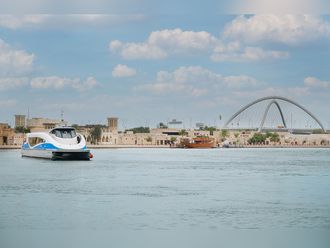Before you take a bite, smell the chocolate, breathe in its fragrance and take a good look at it. The true chocolate is the one which shines and melts directly on the tongue, and gives a joyful feeling.
Almost everyone - in every corner of the globe - is very fond of it, but few have an idea where chocolate comes from, and how it is made. Here, let us try and 'taste' a bar of chocolate in a different way.
Yes, the cocoa-bean, the heart of the sweetest bite, is bitter. Before it is put up on the shelves of chocolate stores, it goes through long and harsh processing, so that we get the final flavour that most of us adore.
The overall chocolate market is divided into three main segments.
The first belongs to the inexpensive chocolate goodies that the one can find on the shelves of the next door grocery and super markets and elsewhere. The source of this kind is mainly from Southeast Asia and Turkey.
The middle market segment is controlled by the multinationals, which is sourced from all around the world. There is also a fair degree of local production. It includes a crowd of brands such as Cadbury's, Bounty, Hershey's, Kitkat, Mars, Snickers, etc. This segment has the lion's share in the market, which is estimated to account for up to 80 per cent.
The high-end chocolates, or which is called - the premium gourmet chocolate segment - is the third one. These chocolates are mainly sourced from Europe, mostly from Switzerland, Belgium, Austria and France. Some also are made here in the UAE.
In the UAE, the chocolate market is huge and full of potential, with an estimated annual business of more than Dh200 million, an approximate 50 per cent of average profit margin, according to Ata Atmar, general manager of Bateel International, the Saudi-based chocolate brand.
However, Satish Ballabhan, sales manager at MMI, says that the overall chocolate market in the UAE is price- and turnover-wise stable, there is not an obvious change. "However, a changing trend that has emerged is that people now are more health conscious, and worried about their weight and their state of health. They don't go for chocolates like they used to," said Ballabhan.
Around 80 per cent of the chocolate in the local market is imported from all around the world. But there is a high level of import substitution relative to other industries in the UAE.
Again, compared to other products, chocolate consumption in the UAE is relatively high as the level of re-exports is low at around 5 to 10 per cent.
Chocolate prices vary from one kind to another. The price also depends on the way the chocolate is presented. Prices can range from Dh100-200 per kilo right up to Dh300 to Dh500 per kilo.
These prices hardly change. It is a stable market because producers do not generally pass the spike in the cost of production to customers. Any hike in terms on prices, is generally absorbed by the chocolate-makers and down the rail chain.
"Our production cost changes all the time. Cocoa-bean, milk and sugar, are main raw materials for making chocolates. The cost of milk and sugar is generally stable. But it is the cocoa-bean cost which fluctuates, that is because it gets effected by the political situation in Africa and South America, the major source of the cocoa-bean, as well as crop situation," said Atmar of Bateel.
There are a lot of firms dealing with the premium gourmet chocolate retail business - some of the major retailers in the UAE include Patchi, Godiva, Goodies International, Kikyo and off late is Bateel International.
The chocolate store welcomes around 50 customers daily from all age groups, demanding different kinds of chocolates.
There are at least 50 kinds of chocolates containing dried fruits, nuts, dates, cream, milky, dark chocolate or simply plain chocolates. In some stores, there are special menus containing diet chocolates and sugar-free kinds which suits diabetic patients, said Rabah Halawani, owner of Goodies Dubai.
The chocolate makers offer customers gift wraps and decorations for different occasions. There are a lot of people who buy chocolates not only for enjoying the sweetness themselves - if anyone wants to give a gift to just say "Happy Anniversary", "Sorry", or "I love you", he/she can say it with chocolates. The chocolate makers provide large quantities of all kinds of chocolates for occasions such as weddings, anniversaries, new births, Valentine days, Ramadan, Christmas and Easter, etc.
Surely, the chocolate sector has different seasons when the business flourishes, and there are also a quiet months for retailers. "Half of our business is during November and December, right up till March. And we also have the low periods which are during the summer when people are away from the country," explained Halawani.
SWEET FACT FILE
- Over Dh200 million of annual business volume
- 50 per cent of average profit margin
- Prices range from Dh100-200 per kilo to Dh300 to Dh500 per kilo.
- Most of chocolates are imported. However, there is a high level of local production
- There is high local consumption as re-exports account for 5-10 per cent of total imports
- There are at least 50 kinds of chocolates in one store
- A chocolate store welcomes around 50 customers a day
- High seasons are from November to March
- Summer is the low period when people are away from the country
- Multinational brands control the majority of the market
Market Watch: A bar of chocolate - to suit all tastes
Before you take a bite, smell the chocolate, breathe in its fragrance and take a good look at it.












